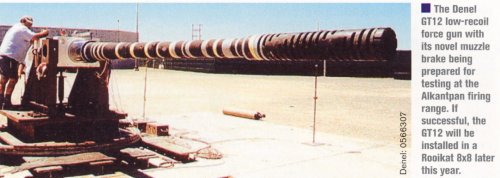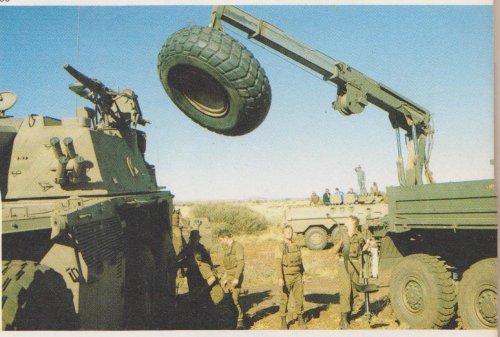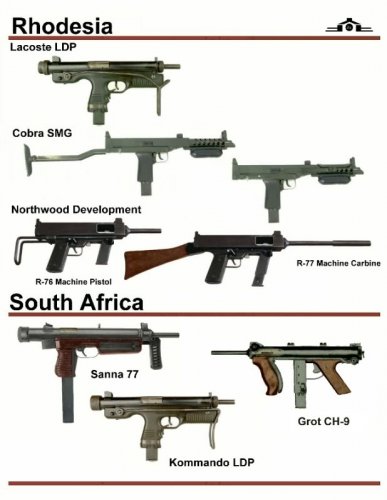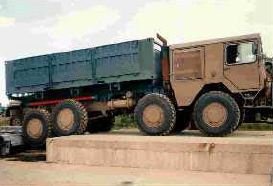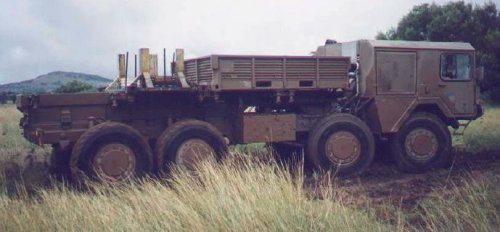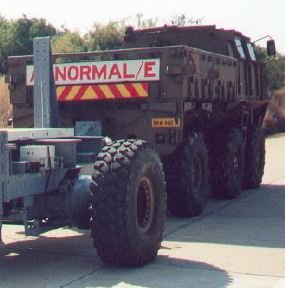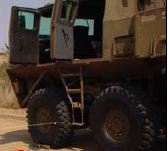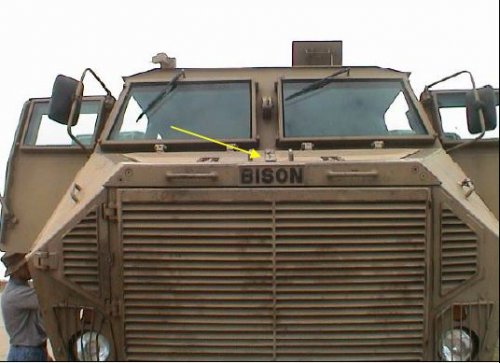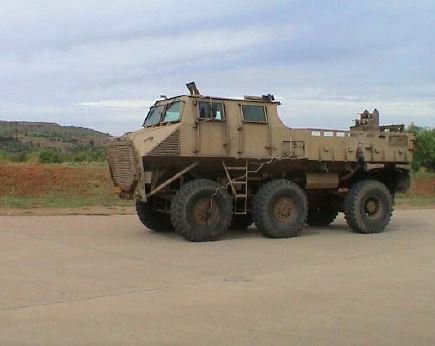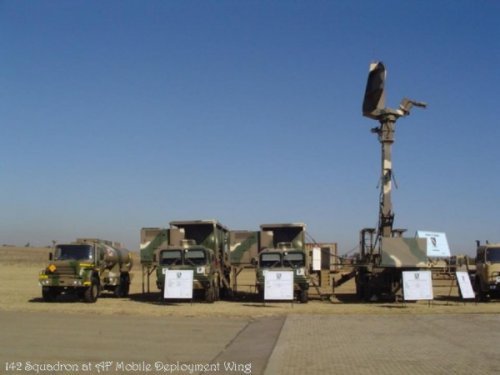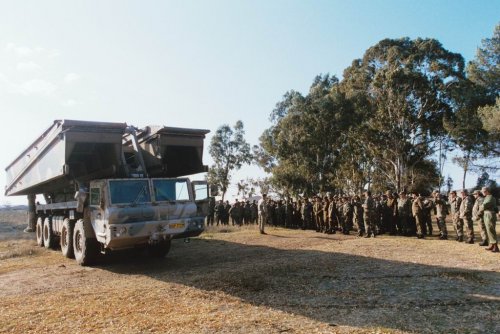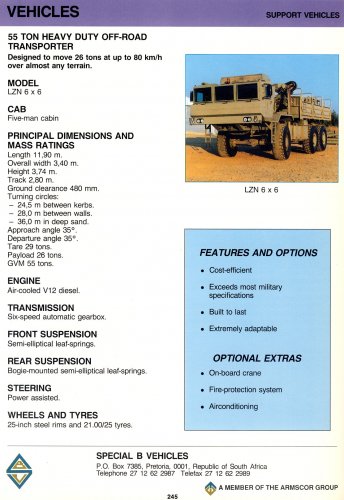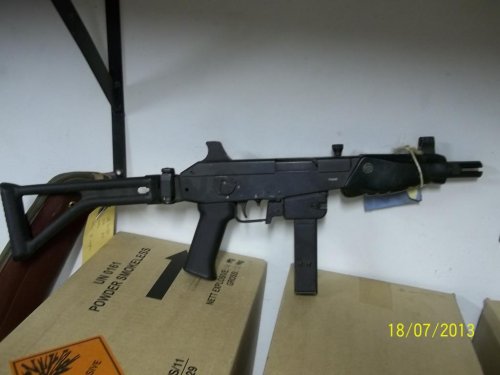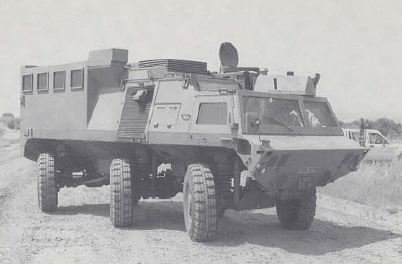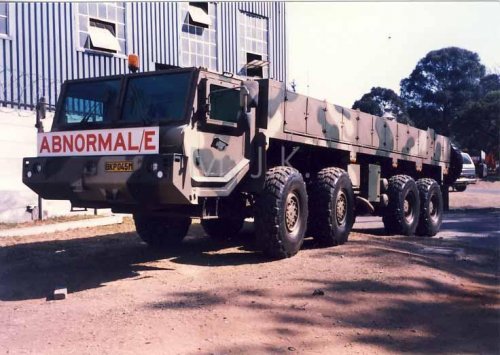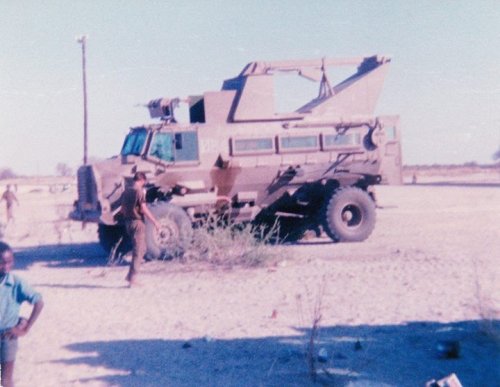Kadija_Man said:
Interesting vehicle. Several points - the high rear hull for a crew compartment indicates how low the front hull is (barely higher than the seated driver?). The fact that we can see how little the hull protrudes below the mudguard height, shows it was quite a shallow hull.
The steering system is quite complex and offers some amusing possibilities for tricks such as "crab steering" (driving sideways). When I was in the Australian Army, I used to drive a four wheel, rough-terrain forklift which had all wheel steering which could do that (if one was being silly or forgetful and locked the rear wheels at an angle and then disabled the rear wheel steering and then turned the front wheels in the same direction. It was often used as a "trap for new players"

). With the wheels in the centre of the vehicle, you'd need front and rear steering to get around. The drive system though must have been pretty difficult to service through the various steering joints.
I've often surprised by this thread with the way you off-handedly reveal which companies were sanction busting with the RSA during the apartheid era.
Everything I'm posting is in the public domain, often times very well buried, or hidden. Sometimes a brief mention in an unrelated document provides a clue on where to look for the related subject.
Some of it is in published academic papers, or hinted/mentioned in there.
There is some backround information out there that I won't or can't mention, as I promised to somebody...
Much of the companies that "officially disinvested" in South Africa simply opened up renamed local companies for their products, or found a local agent to represent them. Some didn't even bother.
I suppose the idea of sanctions runs completely contrary to a free market system and capitalism.
I suppose it helped that South Africa had a gigantic mining industry, of strategic value in global terms, that ensured that dual use engineering components were always readily available.
If not, it appears that SA were quite prepared to throw money at developing a local indigineous capability.
In terms of Israel, I'm not sure some people are aware of how critical South African finance was to many of Israels own projects, apart from vehicles, where South Africa had an engineering advantage.
A lesser known fact is that South African industry produced around 6000 armoured cars (a few prototypes are in this thread), around 600 heavy artillery pieces, and enormous quantities of ammunition of all types during WW2. Lyttleton Engineering Works was officially established in 1953 by the Defence Production Office, although it had existed during WW2 as the Defence Ordnance Workshop.
South Africa always had far more local engineering and heavy industry resources, coupled with a far higher GDP than Israel, though Israel did have the advantage of access to certain components or capabilities denied to SA. Some of this was critical for SA for high end products, although, as Abe Gubler has alluded to, some Western European countries were happy to deal under the counter. (submarine blueprints, engines, etc)
Still, I seem to recall many of the engineers had signed secrecy agreements of 20 or 25 years duration.
I'm hoping more information comes to light now and in the next couple of years, seeing as these agreements have either just ended, or will do so in the next few years.
Your forklift steering shenanigans shows that soldiers are the same the world over, KM. ;D

